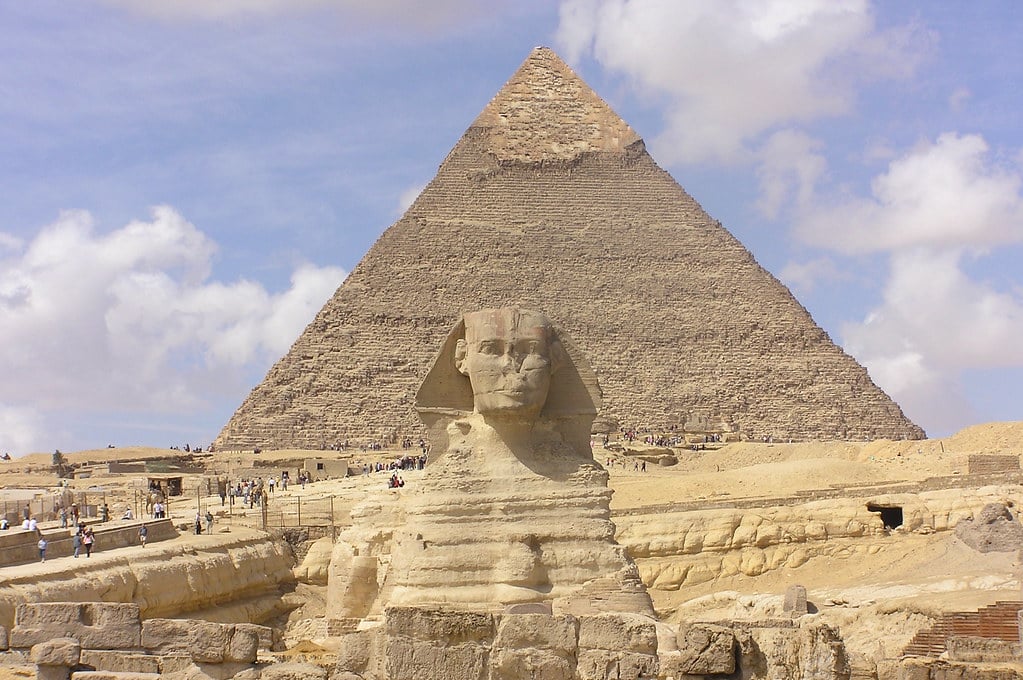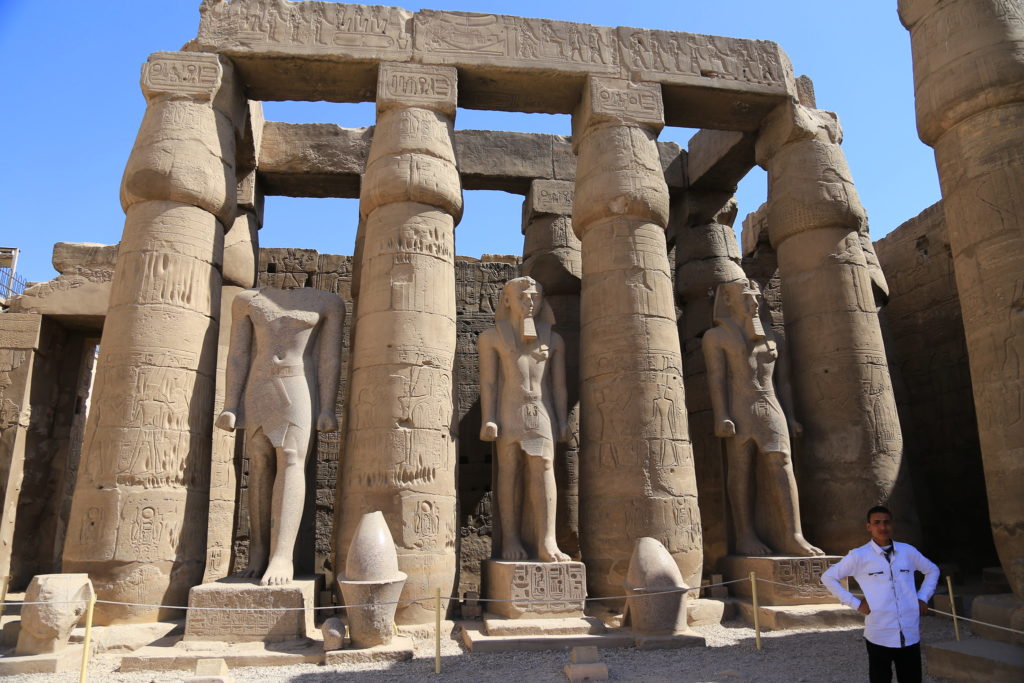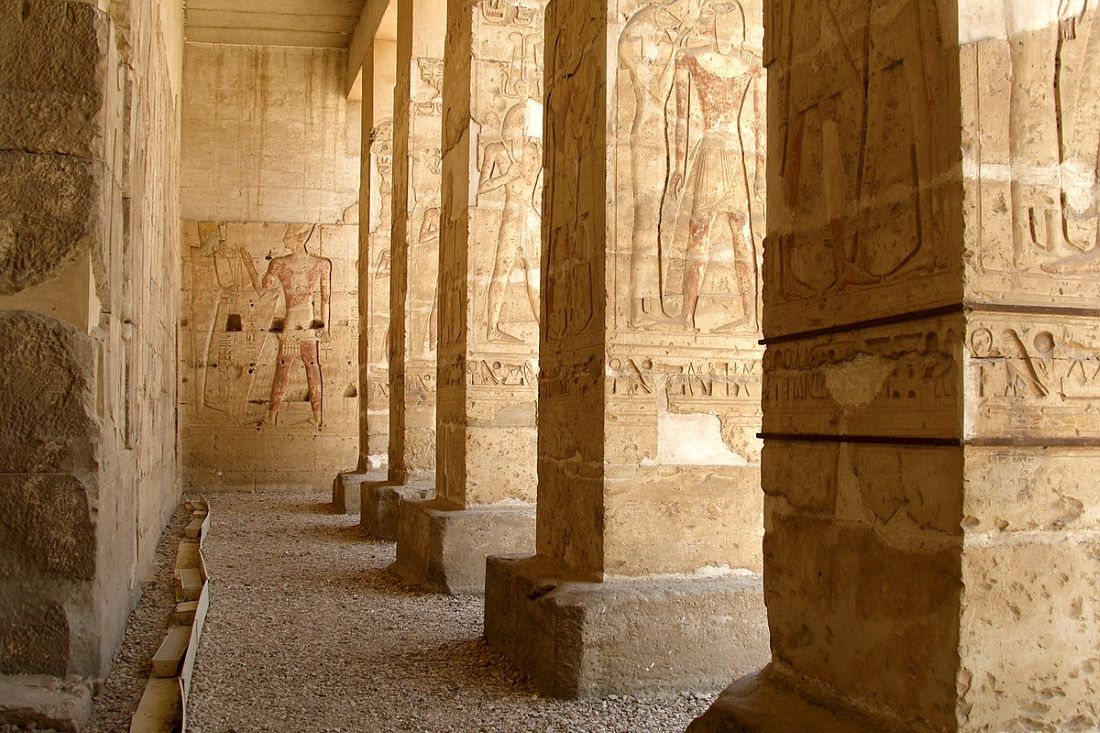
Evidence preserved on papyri and ostraca as well as in graffiti indicates ancient Greek and Roman tourists visited Egypt to observe and admire the Egyptian civilization.
While in ancient times people traveled—sometimes quite far—to worship, written evidence that has been discovered shows that ancient Greeks and Romans visited Egypt very much like modern day tourists also do.
According to British classical archaeologist, numismatist, and historian Joseph Grafton Milne (1867-1951), most ancient Greeks did not travel to Egypt to worship. In the sixth century BC, the development of a Greek factory at Naucratis would bring Greeks into Egypt to learn of the wisdom of Egyptians.
Herodotus in Egypt
The first recorded ancient Greek tourist whose account of his tour in Egypt is preserved is the ancient Greek historian Herodotus. He visited Egypt in the middle of the fifth century BC, when the country was under Persian rule.
According to his own statement, he went up to Elephantine. From his writings, it seems he was more concerned with the customs of the country than with the buildings, meaning the pyramids and overall architecture. He investigated the Nile Delta and recorded the ethnological data.
Greek names are inscribed on the temple of Seti at Avydos from around the time of his visit. Two vase fragments from Naucratis contain the name Herodotus on them, as it was a custom for Greeks to dedicate vases to deities. However, it is not certain whether the name applies to the historian himself.

Alexander the Great Conquest Opens Gates for Greek Tourists
After Alexander the Great conquered Egypt and founded Alexandria in 331 BC and the Ptolemaic dynasty was established some years later in 305 BC, ancient Greek graffiti became plentiful at certain Egyptian centers.
In the following century, the Romans began to concern themselves with Egyptian affairs as well. The earliest dated record of a Roman tourist in Egypt is from a papyrus from 112 BC. As soon as Egypt became a Roman province, more and more people from Rome began visiting.
There are descriptions by ancient Greek historian and geographer Strabo of a typical tour during the reign of Augustus. Later, Prince Germanicus took a tour of Egypt to study its antiquities. A note of the latter’s visit is found on an ostracon dated January 26, 19 AD.
Hadrian (117-138 AD) was the next Roman emperor who visited Egypt and took a long tour. There is graffiti on the “Memnon” colossus at Thebes showing that he visited it on November 28th to 29th in the year 130 AD. There is also an ostracon about the preparations made for his visit two months prior to his arrival. Furthermore, he explored the Nile River.
After the second century, the number of Roman tourists began to decline. The Roman Empire was shaken by attacks from western and northern tribes, while upper Egypt was no longer safe for visitors because of attacks from local tribes.
The latest dateable graffito of a Greek or Roman tourist is in one of the Tombs of the Kings at Thebes, which an Athenian, Nikagoras, visited during the reign of Constantine the Great (306-337 AD).
Itinerary of a Tourist in Ancient Egypt
The historical treasures of Egypt were the same in ancient times as they are today. The normal itinerary of these tourists seems to have been very much that of the
modern visitor.
Alexandria was the start of the tour with the Pharos known as the Lighthouse of Alexandria—one of the Seven Wonders of the ancient world—and the Tomb of Alexander, according to Strabo. Then it was the temple of Sarapis and a visit to Heliopolis to see the temple of Ra.
Tourists proceeded to the Pyramids and Memphis, which was still a populous town during the Roman period and the starting point on the way to the Pyramids. In Memphis itself, there were the temples of Ptah and Apis to be seen, and just outside at Sakkara was the Serapeum.
Today, at Giza, on the paws of the Sphinx, one can see a few inscriptions written by visitors that have been preserved.
The next tourist highlight was the Fayum. This was where the Labyrinth and Pyramid of Hawara and the sacred crocodiles at Arsinoe were located, as noted by Strabo. Further south, the temple of Seti at Abydos seems to have attracted visitors. Some graffiti there has been preserved.
Graffiti left by ancient Greek tourists in the even older Egyptian Tomb of Ramses V.
Scribblings include:
"I visited and did not like anything but the sarcophagus!" and "I cannot read the hieroglyphs."📸u/PorcupineMerchant#Classics #Greek #Egypt #Archaeology #Tourism pic.twitter.com/TksmJLK12c
— Symmachus 📜🏺 (@Symmach_) May 22, 2022
Upper Egypt and Thebes
In Upper Egypt, the chief destination was, as it is today, Thebes. The colossi of “Memnon” and the Tombs of the Kings were the two highlights for visitors.
The earliest dated graffito on the legs of the colossi is by three soldiers from around 65 AD. It was customary for distinguished visitors to have their names inscribed on Memnon’s legs. The names of many of the retinues of Emperor Hadrian are there as are some verses of indifferent merit.
The Tombs of the Kings had a lasting popularity. The earliest graffito in them bears a date of the reign of Ptolemy II (r. 282-246 BC) and signs of visitors exist from six centuries
later during the time of Constantine the Great.
The end of the ordinary tour was probably Syene, where the temples of Philae and the Cataract were visited. There are letters preserved on a papyrus by a tourist named Nearchus from around 100 AD. Herein, it is mentioned that the object of his journey was to see the works of men’s hands.
Ancient Tourist Attractions
Though the itinerary of the visitor to ancient Egypt was practically the same as that of today, in Roman times, there were some tourist attractions that do not exist nowadays.
There is no modern parallel in Egypt to the exhibition of the sacred crocodiles at Arsinoe and the rituals performed by the priests as described by Strabo. Arsinoe was previously an ancient city called Shedet. The Greeks named it Crocodilopolis, (Crocodile City) from the particular reverence paid by its inhabitants to crocodiles. Under the Ptolemies, the city was named Arsinoe.

Similarly, the priests in Memphis used to demonstrate a trotting Apis bull to tourists in exchange for a fee. Apis was an Egyptian god depicted as a bull.
The priests of Abydos used a more dignified way to attain money from tourists. They offered travelers a night’s sleep in the Temple of Seti. Guests also received dream-oracles there. Priests would provide the interpretations for a suitable fee. The numerous names etched on the walls indicate it was a rather popular attraction for tourists.
See all the latest news from Greece and the world at Greekreporter.com. Contact our newsroom to report an update or send your story, photos and videos. Follow GR on Google News and subscribe here to our daily email!



